Nepal is globally acknowledged as a center for thrill-seeking sports and lures adventurers from various parts of the globe. The country, situated in the Himalayas, is blessed with a multitude of natural splendors, varied terrains and fast flowing river making it an ideal location for a broad spectrum of adventure sports.
There are many Types of of adventure Activities in Nepal, including soft , hard and adrenaline adventures such as mountaineering, trekking to the high altitude base camps, sky diving, paragliding, bungee jumping, rafting etc and various other adventure sports. Being said that Nepal also have a side to the soft adventure seekers such camping, hiking, village tours, cycling, helicopter tours to high altitude base camps, etc. Overall, you can find any kind of adventure in Nepal from serious hard adventures to soft adventures.
Hard Adventures
Mountaineering
Climbing in Nepal due to its major adventure sport of mountaineering. Mount Everest, the highest peak globally, is located in Nepal, and many mountaineers visit Nepal to try their luck in climbing this renowned peak. Apart from Mount Everest, other well-known peaks for mountaineering in Nepal include Kanchenjunga, Lhotse, and Cho Oyu. Climbing these peaks requires a high level of technical knowledge, advanced skills, and significant physical fitness due to the harsh weather conditions and climbing to high altitudes.
The best time for mountaineering in Nepal is from late March to early June and from late September to early December. Mount Everest, which stands at 8,848 meters, is the ultimate challenge for mountaineers and is a popular attraction for climbers worldwide. Before attempting to climb Everest, climbers usually undergo weeks of acclimatization to high altitudes and require significant training and experience. The climbing route to Everest’s summit passes through several camps, each at progressively higher altitudes, and the final climb to the summit is a grueling and dangerous ascent.
Nepal is home to other several famous peaks for mountaineering, including Kanchenjunga, which is the third-highest mountain globally, Lhotse, the fourth highest mountain globally, and Cho Oyu, the sixth-highest mountain globally. These mountains offer a challenging but breathtaking climb and are an excellent choice for mountaineers seeking a less crowded climbing experience. Mountaineering in Nepal is strictly regulated, and climbers must obtain permits and hire guides or Sherpas. Mountaineering expeditions in Nepal need extensive logistical support, such as shelter, food, and equipment, and climbers generally depend on a team of porters and Sherpas to assist in carrying their gear and setting up base camps.
Trekking
Trekking in Nepal is the most popular for adventure Activities. the country boasts eight of the world’s highest mountains, including Mount Everest, and has numerous trekking trails with varying levels of difficulty ranging from easy to very strenuous. Trekking is a major attraction for visitors to Nepal as it offers a chance to experience the country’s diverse landscapes, natural beauty, and cultural heritage while also providing a physical challenge.
Some of the most well-known trekking routes in Nepal include the Manaslu Circuit Trek, Langtang Valley Trek, Annapurna Circuit Trek, and the Everest Base Camp Trek. However, trekkers should ensure they are physically fit as trekking in Nepal demands a certain level of fitness.Trekkers also need to obtain permits and hire a guide or porter, as most trekking routes in Nepal are in remote areas with limited infrastructure.
Rafting
Nepal also offers a range of other adventure sports activities such as white-water rafting, kayaking, and canyoning. The rivers in Nepal are fast-flowing and offer some of the most exciting white-water rafting and kayaking experiences. The Bhote Koshi River, Karnali River, Trishuli River, etc are some of the most popular rivers for rafting and kayaking in Nepal. River rafting in Nepal in these rivers has become one of the best activity for adventure seekers.
Rafting in Nepal’s rivers are classified into different grades based on their difficulty levels, with Grade I being the easiest and Grade V being the most challenging. Some of the most popular spots for rafting in Nepal includes:
*Trishuli River: The Trishuli River is one of the most popular rafting destinations in Nepal, offering a range of rapids from Grade II to IV.
*Sun Koshi River: The Sun Koshi River is a longer and more challenging river, offering rapids from Grade III to V. The river flows through some of Nepal’s most remote and scenic landscapes, making it a popular choice for multi-day rafting trips.
*Seti River: The Seti River is a relatively short river that flows through stunning gorges and narrow canyons. The river offers rapids ranging from Grade II to III, making it a great choice for novice rafters and families.
*Kali Gandaki River: The Kali Gandaki River is one of the most challenging and scenic rivers in Nepal, offering rapids from Grade III to V. The river flows through remote valleys and deep gorges, and provides stunning views of the Annapurna and Dhaulagiri mountain ranges.
*Bhote Koshi River: The Bhote Koshi River is a short but intense river that offers rapids ranging from Grade IV to V. The river flows through narrow canyons and steep drops, providing a thrilling rafting experience for experienced rafters.
Bungee Jump
Bungee jumping is a popular activity in Nepal that attracts adventure enthusiasts globally. Kushma and Bhotekoshi are two of the most renowned bungee jumping spots in Nepal.
The Kushma bungee jump is situated in the Parbat district, approximately three hours away from Pokhara. The jump takes place from a suspension bridge that stretches over the Kali Gandaki River and has a height of about 228 meters. The jump location provides an astounding view of the Himalayas and the river below.
The Bhotekoshi bungee jump is located close to the border of Tibet and takes about three to four hours to reach from Kathmandu. The jump occurs from a suspension bridge that is 160 meters high over the Bhotekoshi River. The jump site has beautiful scenery, surrounded by hills and forests.
Paragliding
Nepal is a famous destination for adventure enthusiasts who love paragliding. The country has various picturesque locations that provide breathtaking views of the Himalayan mountains and the surrounding areas. The most well-known paragliding spots in Nepal are Sarangkot, and Bandipur.
Pokhara is the most sought-after location for paragliding in Nepal, where many companies provide flights with skilled pilots. The flights start from Sarangkot, a hill station located approximately 10 kilometers away from Pokhara. During the flight, travelers can enjoy the beauty of the Pokhara valley, with the Annapurna and Dhaulagiri mountain ranges in the background. Sarangkot is also a favorite spot for experienced paragliders who enjoy flying solo.
Other locations for paragliding in Nepal include Bandipur, which is a traditional Newari town located about 140 kilometers from Kathmandu, and Sirkot, which is a small village located about 75 kilometers from Pokhara
Sky diving
If you’re seeking an exciting adventure sport that involves free falling from thousands of feet high in the air, skydiving might be perfect for you. While skydiving in Nepal isn’t as commonly practiced as other adventure activities such as bungee jumping or paragliding, there are still some places where you can participate in it.
Everest Skydiving is the primary location for skydiving in Nepal. It’s an exclusive adventure that takes place in the Everest region and is organised by a team of skilled skydivers and adventure experts. The adventure involves a helicopter drop from a height of 12000 feet 15000 feet above sea level. During the skydive, you’ll be treated to stunning views of the Himalayan mountains, including Mount Everest, Lhotse, and Makalu.
Another popular skydiving destination in Nepal is the city of Pokhara, which is renowned for its natural beauty and adventure sports. Skydiving in Pokhara is conducted at an altitude of approximately 10,000 feet, offering breathtaking views of the Annapurna mountain range and the Phewa Lake.
Soft Adventures
Day Hikes
Walking on natural trails or paths in outdoor environments, such as forests, parks, and mountains, is known as hiking, which is a popular activity. It is a great way to exercise, unwind and explore nature. Day hikes in Nepal can be done at different levels, ranging from simple walks to more demanding treks that needs high fitness levels. Nepal has several well-known hiking spots, such as Nagarkot, Shivapuri, and Chandragiri.
Nagarkot is a small hill station located east of Kathmandu. It is famous for its stunning sunrise and sunset views of the Himalayan range. The hike to Nagarkot takes about 3-4 hours from Kathmandu, and the trail passes through small villages, terraced fields, and pine forests. The hike is relatively easy, and you can do it all year round.
Shivapuri is the second-highest hill around the Kathmandu valley, located about 12 kilometers north of Kathmandu. The hike to Shivapuri takes about 5-6 hours from Kathmandu, and the trail passes through dense forests of oak, rhododendron, and pine. You can also visit the Bagdwar, the source of the Bagmati River, on this hike.
Village Tours
Nepal is renowned for its abundant cultural legacy and the conventional lifestyle of its inhabitants. Cultural village tours in Nepal provides a distinct opportunity to witness the daily routine and traditions of rural communities. A few examples of village tours are Ghale Gaun, Chitlang, and Ghorepani.
Ghale Gaun is an archetypal Gurung village situated in the Annapurna region of Nepal, celebrated for its extraordinary architecture, cultural traditions, cultural performances, and traditional Gurung cuisine.
Chitlang is a petite village located on the outskirts of Kathmandu valley, famous for its rich cultural heritage, verdant landscapes, organic farming practices, etc. Ghorepani is a small village located in the Annapurna region of Nepal, recognized for its magnificent views of the Himalayas, traditional lifestyle, and prosperous cultural heritage.
Cycling
Cycling in Nepal can be a thrilling adventure, with a range of routes that cater to different fitness levels and preferences. Here are some of the major cycling routes in Nepal:
*Kathmandu Valley Circuit: This route takes you through the cultural and historical highlights of the Kathmandu Valley. You can find different kinds of trails and routes totally depending upon your preference and needs. Some of the most preferred trails are Nagarkot trail, Panauti trail, Shivapuri trail, etc.
Pokhara Loop: This route is a scenic ride that takes you through the picturesque landscapes of the Pokhara Valley. You’ll ride along the tranquil Phewa Lake, cycle through forests and waterfalls, and witness the stunning views of the Annapurna range. The route is relatively easy, with some hills.
Helicopter Tours
A helicopter tour to high altitude base camps in Nepal is an exciting way to explore some of the most remote and stunning areas including the Himalayas. These tours typically involve flying in a helicopter to the base camps of some of the world’s tallest and most iconic mountains
During the tour, you will get to enjoy breathtaking views of the mountain ranges and the surrounding landscape from a unique perspective. You will also get to land at some of the highest base camps in the world, where you can explore the area and take in the stunning scenery.
One of the most popular high altitude helicopter tours is to the base camp of Mount Everest. The tour takes you on a thrilling flight through the Himalayas and offers stunning views of the world’s tallest mountains, including Mount Everest, Lhotse, and Nuptse. You will get to land at the base camp and explore the area, which is situated at an altitude of over 5,000 meters.
Other popular high altitude helicopter tours include tours to the base camps of other Himalayan peaks, such as Annapurna, Dhaulagiri, and Kanchenjunga, etc.
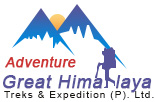

 Saturday, August 30th, 2025
Saturday, August 30th, 2025
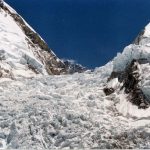 Wednesday, August 27th, 2025
Wednesday, August 27th, 2025
 Wednesday, August 20th, 2025
Wednesday, August 20th, 2025
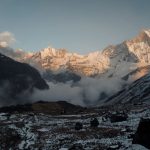 Wednesday, August 20th, 2025
Wednesday, August 20th, 2025
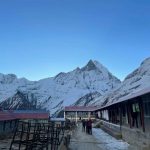 Wednesday, August 13th, 2025
Wednesday, August 13th, 2025
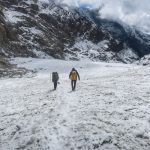 Wednesday, August 6th, 2025
Wednesday, August 6th, 2025
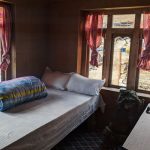 Monday, July 7th, 2025
Monday, July 7th, 2025
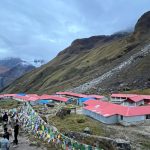 Thursday, July 17th, 2025
Thursday, July 17th, 2025
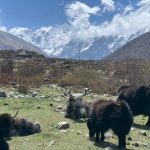 Monday, July 7th, 2025
Monday, July 7th, 2025
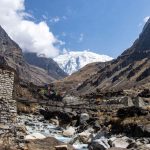 Friday, May 9th, 2025
Friday, May 9th, 2025
 Saturday, June 14th, 2025
Saturday, June 14th, 2025
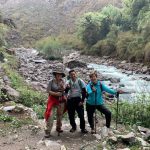 Wednesday, June 25th, 2025
Wednesday, June 25th, 2025
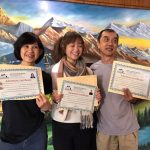 Tuesday, August 5th, 2025
Tuesday, August 5th, 2025
